El Paso, TX Pollen and Allergy Report for Summer 2023
Pollen Allergy Trends in El Paso, TX
When is pollen lowest in El Paso, TX?

February
Lowest month total PPM
Avg. PPM
When is pollen highest in El Paso, TX?

March
Highest month total PPM
Avg. PPM
How does pollen in El Paso, TX compare to Texas?
El Paso has a lower average PPM than the state of Texas.
El Paso yearly avg PPM:
Texas yearly avg PPM:
How does pollen in El Paso, TX compare to the USA?
El Paso has a lower average PPM than the USA.
El Paso yearly avg PPM:
USA yearly avg PPM:
Is pollen worse this year in El Paso, TX?
Spring 2023 was better than spring 2022.
Spring 2023 PPM:
Spring 2022 PPM:
Average PPM in El Paso, TX
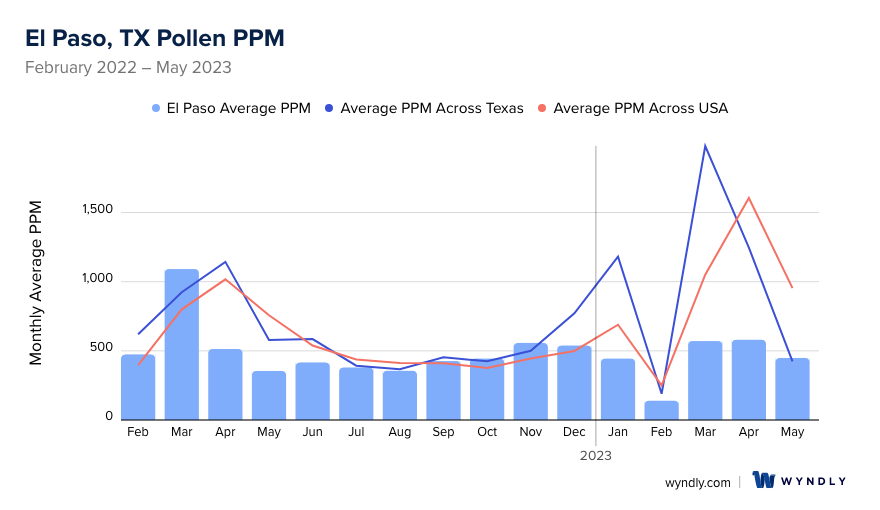
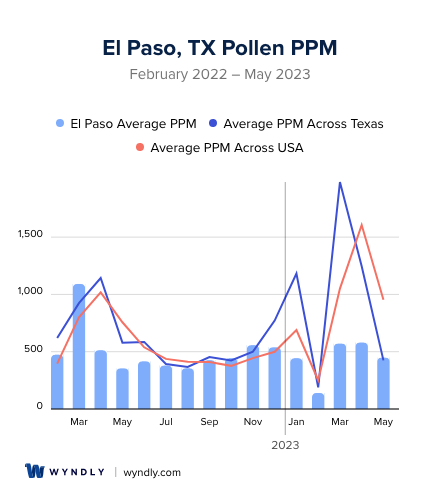
El Paso, TX Pollen and Allergy Breakdown by Month
Grass
When is grass pollen highest in El Paso, TX?
May has the highest grass pollen in El Paso, TX with an average PPM of
When is grass pollen lowest in El Paso, TX?
December has the lowest grass pollen in El Paso, TX with an average PPM of
Tree
When is tree pollen highest in El Paso, TX?
March has the highest tree pollen in El Paso, TX with an average PPM of
When is tree pollen lowest in El Paso, TX?
July has the lowest tree pollen in El Paso, TX with an average PPM of
Weed
When is weed pollen highest in El Paso, TX?
November has the highest weed pollen in El Paso, TX with an average PPM of
When is weed pollen lowest in El Paso, TX?
February has the lowest weed pollen in El Paso, TX with an average PPM of
El Paso, TX Pollen Monthly Breakdown by Pollen Type
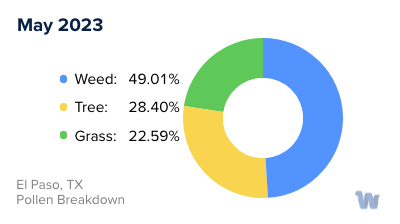
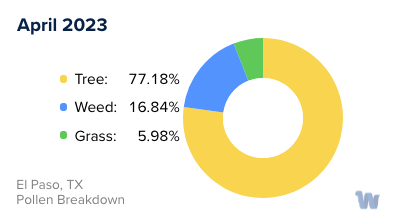

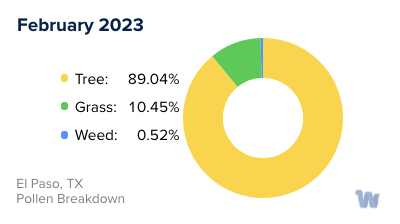
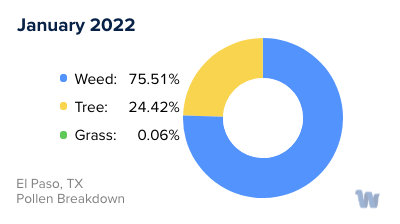
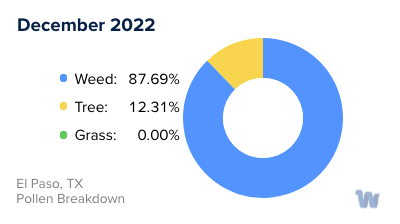
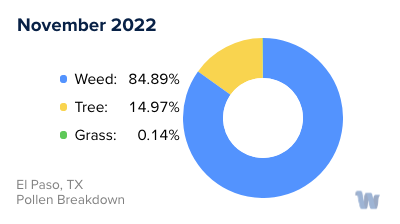
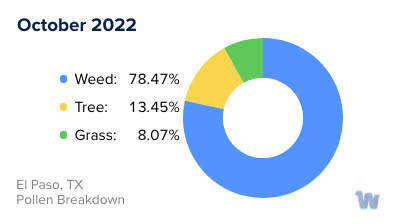
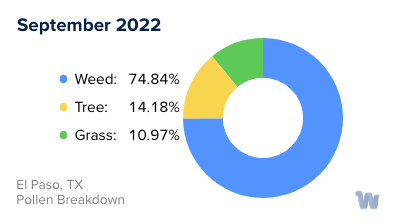
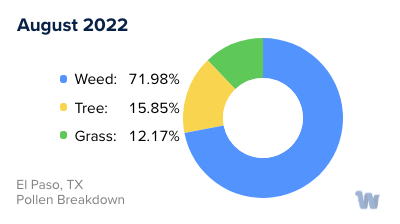
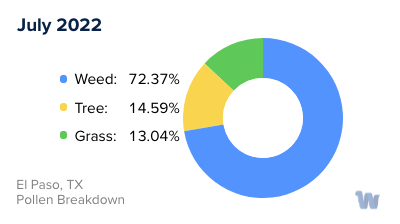
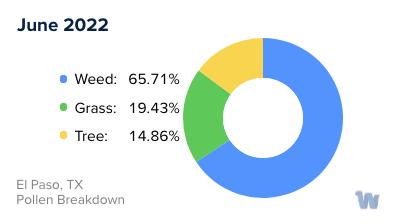
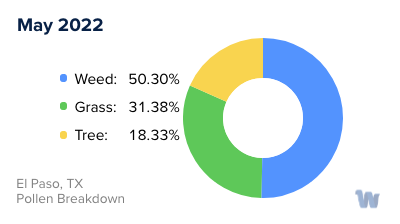
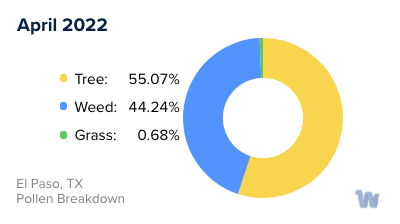
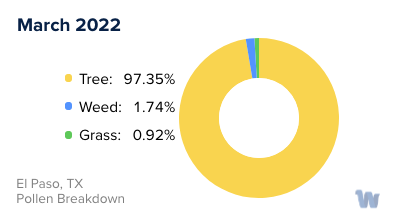
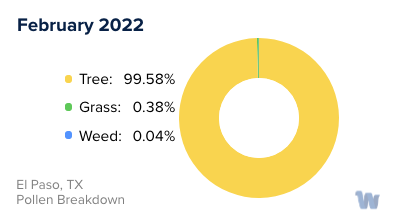
Pollen and Hay Fever in El Paso, TX
Allergies, while often dismissed as minor inconveniences, can significantly impact our lives. For the residents of El Paso, Texas, pollen allergies, specifically hay fever, are a familiar and seasonal struggle. Understanding the triggers and timing can help individuals anticipate and navigate the challenges these allergies present.
In El Paso, three primary types of pollen tend to dominate the allergenic scene. These include tree pollen, grass pollen, and weed pollen. Each has a unique season, meaning the city experiences a relatively constant cycle of allergy-inducing pollens throughout the year.
The first to arrive is tree pollen. Typically, trees in El Paso begin their pollination process in the early spring. This season can start as early as February and last through May. The primary culprits during this time are oak, pine, and cedar trees, which blanket the city with their microscopic pollen particles.
As the tree pollen season begins to wind down, grass pollen season picks up. From late spring to early summer, usually around May to July, grasses such as Bermuda grass, Timothy grass, and Kentucky bluegrass release their pollen. This pollen can be particularly bothersome for many individuals, resulting in the classic hay fever symptoms like sneezing, itchy eyes, and a runny nose.
Finally, as summer ends and fall begins, weed pollen takes the stage. From August to November, weeds such as ragweed, sagebrush, and lamb's quarters release their pollen. It's worth noting that ragweed, despite its small size, can produce a significant amount of pollen that causes uncomfortable symptoms for many El Paso residents.
In conclusion, residents of El Paso, Texas, live in a cyclical world of pollen allergies. Each season brings a new type of pollen, and with it, a new set of challenges. By understanding these patterns and seasons, individuals can better anticipate when their allergies may flare up and take proactive steps to manage their symptoms.

